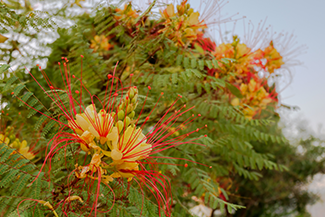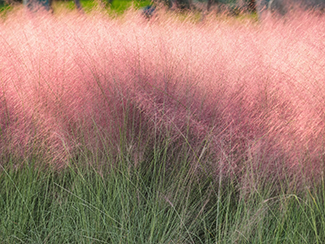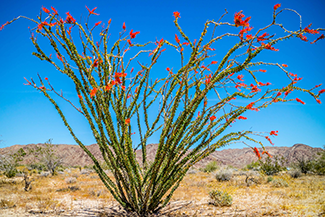Creating A Lush Landscape Without Excessive Water Usage
Water Wise Landscape
The largest use of potable water in Arizona is for landscaping and as much as 70 percent of residential water use is outdoors, according to the Arizona Department of Water Resources. That is a point I cannot stress this enough.
Help control landscape water waste by choosing plants native to our climate through xeriscape. This kind of design focuses on water conservation through creative landscaping. It involves combining low-water plants with hard surfaces and encourages water-smart design and maintenance of your property.
Seven Basic Xeriscape Design Principles
 Design your yard with water conservation in mind. Work with a landscaper who specializes in native plants and design.
Design your yard with water conservation in mind. Work with a landscaper who specializes in native plants and design.- Choose low-water plants. That same landscaper can help you select the right plants for your yard's soil condition and exposure.
- Limit your lawn. I get it. Sometimes you just want to wriggle your toes in the cool grass. But non-native grass needs lots of watering. Limit it to your children's play area and pet run. See native options below.
- Irrigate efficiently. Replace whirly-bird sprinklers with an inexpensive drip irrigator, which drips water only on the plant that needs watering. Rig your sprinklers to timers. Invest in an irrigator with a controller that automatically senses when your plants need water.
- Harvest water. Collect rainwater by digging shallow ditches around flowerbeds and/or install a rain barrel at the end of your gutter downspout to irrigate landscape.
- Mulch your plants. Placing mulch on the soil under and around plants helps hold in soil moisture and lower the soil's temperature during the summer – plus, it keeps weeds away.
- Take care of your yard. A well-maintained plant needs less water. Proper fertilizing, pruning, and weed control can keep your plants healthier.
Xeriscape Plants
These plants, cacti, trees, and grasses as suggested by the Arizona Municipal Water Users Association are just a few that require low to very low watering to maintain their heartiness.
Shrubs
John Eisenhower, Rosie-Certified Integrity SaveATree, particularly favors the desert fern. As John noted during a podcast its fern-like leaves are elegant and beautiful, and as a native plant, they have fewer natural problems. Though it is shrub-like, it will max out at 20 feet tall. Don't place it near the pool unless you want it covered with yellow puffballs.
Want to attract hummingbirds? Plant a few pink fairy duster plants. This three-foot, airy shrub's pink furry blooms pop from its evergreen foliage in the spring and fall.
The exotic flowers of the yellow bird of paradise attract hummingbirds and butterflies. Growing as high as six feet, this plant will add height to your landscape.
Trees
Though it grows slowly, the ironwood tree can mature to 25 feet high. With dusty lavender flowers that bloom in the spring, this evergreen tree thrives in the full sun. It's a relatively clean tree so it is okay to plant it near the pool.

A bold, tropical tree, the Mexican blue palm is well suited to containers and can reach 15 feet high. This slivery blue tree is a beautiful complement to place near the pool.
White thorn acacia is good for naturalistic landscapes. It is multi-trunked and can grow to 10 feet tall by 15 feet wide. It will bloom small yellow puffballs in the spring and attracts wildlife.
Cacti
The Argentine giant cactus boasts fragrant, white, striking flowers that bloom six to eight inches across. At maturity, this cactus will grow to two feet high by three feet wide.
With its spectacular red, fuchsia and deep orange flowers, the Argentine hedgehog is one of the most colorful cacti.
Spruce cones make a good container plant. It blooms small white flowers in the spring and resembles a deeper green cholla minus the thorns.
Grass
Native ornamental grasses add a softening element and motion to your landscape. The color and form of grasses change throughout the year, creating seasonal interest. Some ornamental grasses can reseed in landscapes. Watering ornamental grasses with drip irrigation will generally eliminate or minimize reseeding.
Deer grass features lush foliage with green flowers that dry to tan tall spikes. With a mature height of four feet, this grass can be planted near the pool.
Plant pink muhly for deep pink flower plumes that will be backlit by the sun. This fine grass can grow to three feet high.
Sideoats grama resembles green waves of grain and has seed stalks that attract birds.

Succulents
Before selecting succulents, the AMWUA suggests you check the plant's mature size and presence of thorns before planting. Some larger succulents can overwhelm a small garden. For safety reasons, succulents with thorns or spines should not be located next to walkways, play areas, or traffic areas.
Contrary to popular belief, the ocotillo is a succulent, not a cactus. The ocotillo offers a striking silhouette and attracts hummingbirds. You really need a charcoal black thumb to kill this plant.
Patridge breast aloe is a great option for small spaces, narrow areas, and containers. Rabbit-resistant and pool-friendly, this one boasts striking markings.
The soaptree yucca has a tree-like quality with its white clusters on tall stalks. Tip: leave dead leaves on the trunk to avoid sunburn damage.
AMWUA offers tips additional plants for xeriscape consideration and caring for desert plants while conserving water.
Home Maintenance To-Do | #WaterWise Landscape | #TimeToAddPlants
###
Photo Credits:
- Shutterstock
RELATED CONTENT:
- Blog: The Toughest Stuff to Grow in Arizona
- Blog: Irrigation: The Backbone Of A Healthy Landscape
- DIY FAQ: How Rainwater Can Be Saved and Used
- DIY FAQ: What Is Xeriscaping?
- DIY FAQ: How & When To Update Your Watering Schedule
- DIY FAQ: How Can I Tell If My Landscaping Plants Are A Low Water Variety?
- DIY FAQ: Tips for setting up your drip irrigation system
- Shade trees: 5 great, low-water shade trees for your home
- Search our DIY Home Improvement Database & Library
- Weekly Podcast: Subscribe for free!
